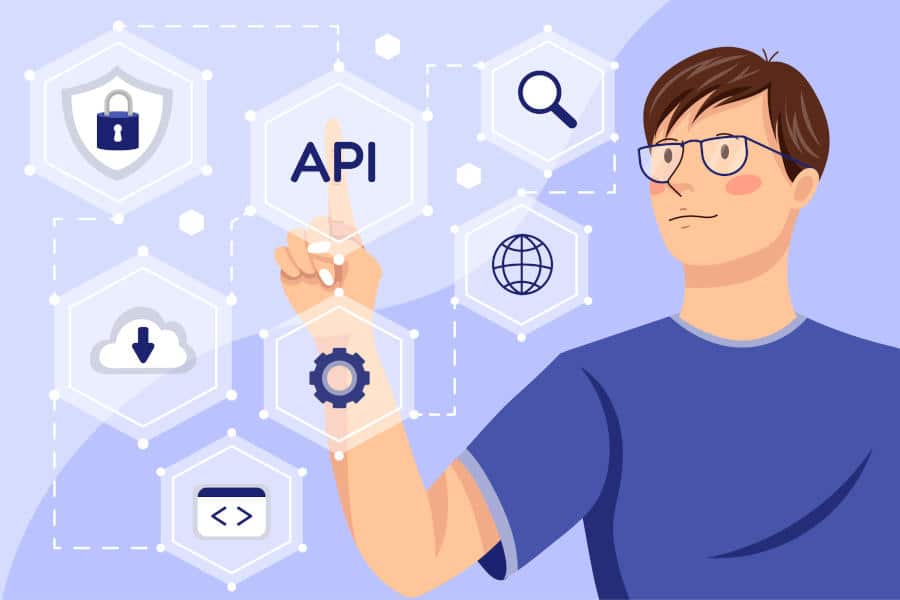Application Programming Interfaces (APIs) are of vital importance in the field of data science. They make it easier to access and manipulate data from a variety of sources, including social networks, cloud services and databases.
Tools such as TensorFlow, Scikit-learn and Pandas are examples of data science APIs that simplify analysis, data processing and the integration of predictive models into applications. They also enable data sets to be enriched using external resources, making data science work more efficient. The Postman application makes it easy to use them!
Decoding Postman
Among the many solutions available for querying or testing APIs, Postman stands out for its tailored tools and ease of use, in both desktop and online formats. Its features include the API Repository, API Tools, API Governance and Postman Integrations. Let’s take a closer look at each of these solutions.

1. API Repository
This platform provides a centralised online storage space for all essential information relating to APIs.
It facilitates collaboration within teams by enabling the creation, organisation and control of different versions of the APIs developed. This ensures that everyone is using the right version of the tools and documents. In addition, it allows the use of API design tools such as OpenAPI, GraphQL or RAML to simplify the creation of APIs and integrate them with other code management and deployment tools.
Developers can also take advantage of Git, a version control system, to automatically manage API documentation, tests and specifications while working on the code. This makes it possible to track all changes and maintain rigorous organisation.
Postman allows APIs to be shared within the team (Private Network) or publicly (Public Network), making it easier to discover new APIs or to make your organisation’s APIs available to other users. In addition, it offers a powerful search tool for easily finding information in the API database.
2. API Tools
Postman is a comprehensive platform for accelerating the API management process, offering a plethora of tools for designing, testing, documenting, simulating, sharing and discovering APIs.
- Client API
It makes it easy to explore, debug and test APIs for HTTP, REST, SOAP, GraphQL and WebSockets protocols. It automatically identifies response language, links and text format for easy inspection. It also supports various authentication protocols.
- API specification design
Postman makes it easy to design API specifications using formats such as OpenAPI, RAML, GraphQL or SOAP. Its schema editor validates specifications and generates collections for various stages of the API lifecycle from these specifications.

- Automatic documentation
It generates documents from OpenAPI files, including sample code in different languages. In addition, the platform offers automatic documentation, supporting machine-readable markdowns and formats.
- Tests and simulations
Postman lets you create and run tests directly or via Newman, a collections runner. It offers a Node.js runtime for writing functional, integration, regression and other tests. What’s more, dummy servers can be created to simulate the operation of the API before it goes into production, allowing simulation of end points and network latency.
- Surveillance and security
Postman monitors help to monitor the status and performance of APIs in different geographical regions, and can be integrated with other alerting systems and dashboards. In addition, the Postman interceptor captures browser requests and cookies for easy debugging, while the proxy can be used with HTTP or HTTPS websites.
3. API Gouvernance
Postman’s API Governance provides development teams with API governance by delivering API design rules directly to where developers work. This approach to governance across the entire API lifecycle improves the quality of APIs and encourages collaboration between development teams and API design teams.

Postman’s API Security functionality simplifies the integration of organisational policies into API development for developers. By moving security to an earlier stage, organisations can invest earlier in the API lifecycle, while equipping API teams with guidelines and policies to deliver more secure APIs.
Postman’s reporting dashboard provides in-depth analysis of your APIs, helping to understand the overall state of your API landscape. It quickly identifies undocumented, untested or unmaintained APIs, improving operational management and efficient use of team resources. In addition, security audits for access tokens ensure secure use of your instance.
4. Postman Integration
Postman connects to key tools such as AWS API Gateway, GitHub and Jenkins to prioritise APIs. In addition, its new integrations with AWS API Gateway, GitHub and Jenkins make it easier to create, test and deploy APIs via the Postman platform.
In conclusion
Postman is a complete solution for simplifying API management, offering a range of complementary tools. You can find out how to use this application in the API and security module of our Data Engineer and Machine Learning Engineer training courses.










